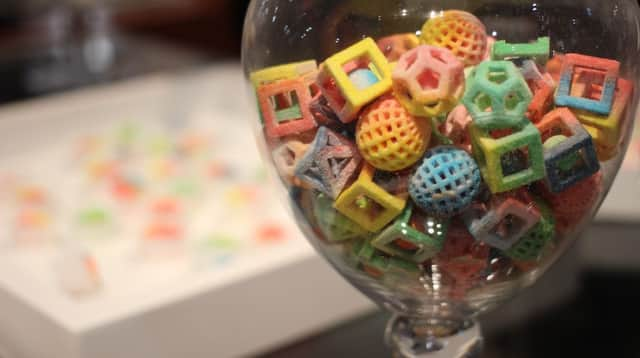3D-printed food: The future for restaurants in Scotland?


But 3D-printed food is already a reality and could soon be seen in kitchens across the world.
Last year, the world’s first consumer 3D food printers - Chefjet and Chefjet Pro - were unveiled at the Consumer Electronics Show in Las Vegas.
WHAT CAN THEY PRODUCE?
Advertisement
Hide AdAdvertisement
Hide AdThe Chefjet uses chocolate and sugar to produce intricate shapes that would be impossible to make by hand.
It layers sugar and water, which crystalises, to form patterns. The world’s first 3D-printed sweet shop has already opened in Dubai and more are expected to follow.
WHAT ABOUT SAVOURY FOOD?
If you have a spare $1500, you could pick up a cube-like machine called the Foodini, which boasts it can handle any ingredients you wish. Again, its main purpose is to provide intricate decoration. 3D-printers are the icing on the cake - they don’t bake it.
WHO USES SUCH DEVICES?
Given their cost and relative rarity, 3D food printers are currently the preserve of fine-dining establishments with budgets to experiment. Paco Perez, a chef who has won several Michelin stars, uses one at La Enoteca restaurant in Barcelona. “It’s very interesting what today’s technology is contributing to gastronomy” he told the BBC. “Creativity is shaped by what technology can do”.
ARE SCOTTISH RESTAURANTS USING THEM?
Not yet. But as 3D food printers become more affordable, their use will become more widespread. A spokeswoman for the Scottish Centre for Food Development and Innovation at Queen Margaret University in Edinburgh said: “There is certainly excellent potential for the application of 3D printing in the food industry, particularly for the development of concepts and prototypes.
“It would offer a cost effective way for businesses to develop prototypes of new and interesting food products. This would be particularly useful for many small and medium sized food businesses which do not have large research and development budgets.
“The application for the confectionary market is easy to see with an impressive range of sweet creations made from chocolate and high-sugar based ingredients.
“We all know that we eat with our eyes and, particularly for Scotland, it would be more favourable to see the use of 3D printing applied to healthy functional foods. For example, it might have a positive impact if it was used to create interesting shaped healthy foods that would encourage children to eat more vegetable based dishes.”
